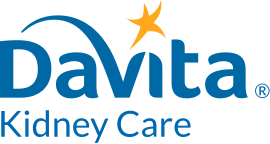Disclaimer: This article is for informational purposes only and is not intended to be a substitute for medical advice or diagnosis from a physician.
Although many components of a dialysis or kidney diet are the same for people on hemodialysis (HD) (in-center traditional, in-center nocturnal or home) or peritoneal dialysis (PD), there are also differences. To some extent, your dialysis diet is determined by the kind of dialysis you choose. It’s important to know which aspects of your diet need to be altered to ensure you stay as healthy as possible.
What are the diet differences for HD and PD diets?
Calories
Adequate calories are required for the human body to function and not become malnourished. But for PD patients, some calories come from dialysate solution, the cleansing fluid placed in the abdomen that pulls waste and extra fluid out of the blood. It contains dextrose, a form of sugar, providing calories and decreasing the need for as many calories from food. That’s why PD patients typically need to eat fewer carbohydrates than HD patients do.
Potassium
High potassium levels are more common in people on hemodialysis. The recommended amount of potassium for people on HD three times per week is usually 2,000 mg per day. Potassium removal is more efficient on PD because the treatment occurs daily. A typical daily goal for PD patients is 3,000 to 4,000 mg of potassium.
Fluid balance
HD patients may feel the negative effects of fluid imbalance more than PD patients or those on short daily HHD. Although this doesn’t mean PD and HHD patients can drink unlimited amounts, their fluid allowance is usually more generous. It’s recommended that people on dialysis who don’t make urine consume less than 4 cups (32 ounces) of fluid each day. This includes foods, such as soup, ice pops, gelatin, gravy and ice that are liquid at room temperature.
What are the diet differences for HD and PD diets?
Protein
Protein needs are higher in people undergoing dialysis. Whether you’re on HD or PD, protein loss occurs. This loss can be made up for by eating high-quality protein foods such as meat, poultry, fish, eggs, cottage cheese and soy products like tofu and tempeh.
Sodium
HD and PD patients may be instructed to limit their sodium intake to 2,000 mg or less daily. High-sodium intake can lead to increased thirst, swelling, shortness of breath, high blood pressure and heart failure. Sodium is often found in large amounts in pre-packaged and processed foods, frozen meals and frozen vegetables with sauce, canned foods, restaurant and fast foods.
Phosphorus
Excess phosphorus is excreted by healthy kidneys. When kidneys fail, phosphorus builds up in the blood, which can cause severe bone and heart problems, tissue calcification and itching. Phosphorus is found naturally in meat, milk, yogurt, natural cheese, legumes, whole grains, chocolate and nuts. Your dietitian will provide guidelines for including these healthy phosphorus-containing foods in your meal plan. Phosphorus in the form of phosphate additives is found in foods such as colas and some other bottled or canned beverages, processed meat and cheese, instant puddings and sauces and many highly processed foods. Phosphorus from additives is absorbed 90 to 100%, and should be limited as much as possible. The recommended amount of dietary phosphorus is 800 to 1,000 mg per day for people on HD and PD.
Calcium
No matter which dialysis treatment you’re on, calcium intake should be no more than 2,000 mg daily. This includes calcium from calcium-based phosphate binders.
Fiber
Whether you’re on HD or PD, it’s recommended that you consume 20 to 25 grams of fiber per day. By consuming a diet rich in kidney-friendly fruits and vegetables along with some lower-phosphorus grain products, you should be able to meet your fiber needs.
Learn more about the PD diet and consult with your dietitian and care team to make a diet plan that meets your specific needs.


